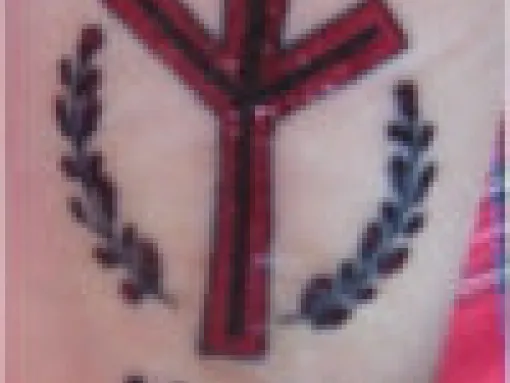Nazi Germany appropriated many pre-Roman European symbols, such as runic symbols, in an attempt to glorify an idealized "Aryan/Norse" heritage. One of these was the so-called "life rune" (from the German Lebensrune), also known as the Elhaz or Algis rune. Elhaz means "elk" and in early Europe this symbol had meanings related to stags or hunting, as well as honor, nobility, or protection. The Nazis used the symbol in various contexts, including the SS's Lebensborn project, which encouraged SS troopers to have children out of wedlock with "Aryan" mothers and which kidnapped children of Aryan appearance from the countries of occupied Europe to raise as Germans.
Because of the Nazi use of the symbol, later white supremacists continued to use the Life rune and it became very popular after the neo-Nazi National Alliance adopted the symbol as part of their logo. Since then, it has become a very common white supremacist symbol, used by neo-Nazis and other white supremacists.
Because the Life Rune also continues to be used by non-racists, typically adherents of neo-pagan religions, one should not simply assume that a particular use of this symbol is racist, but should carefully judge it in its context.
Additional Images

















